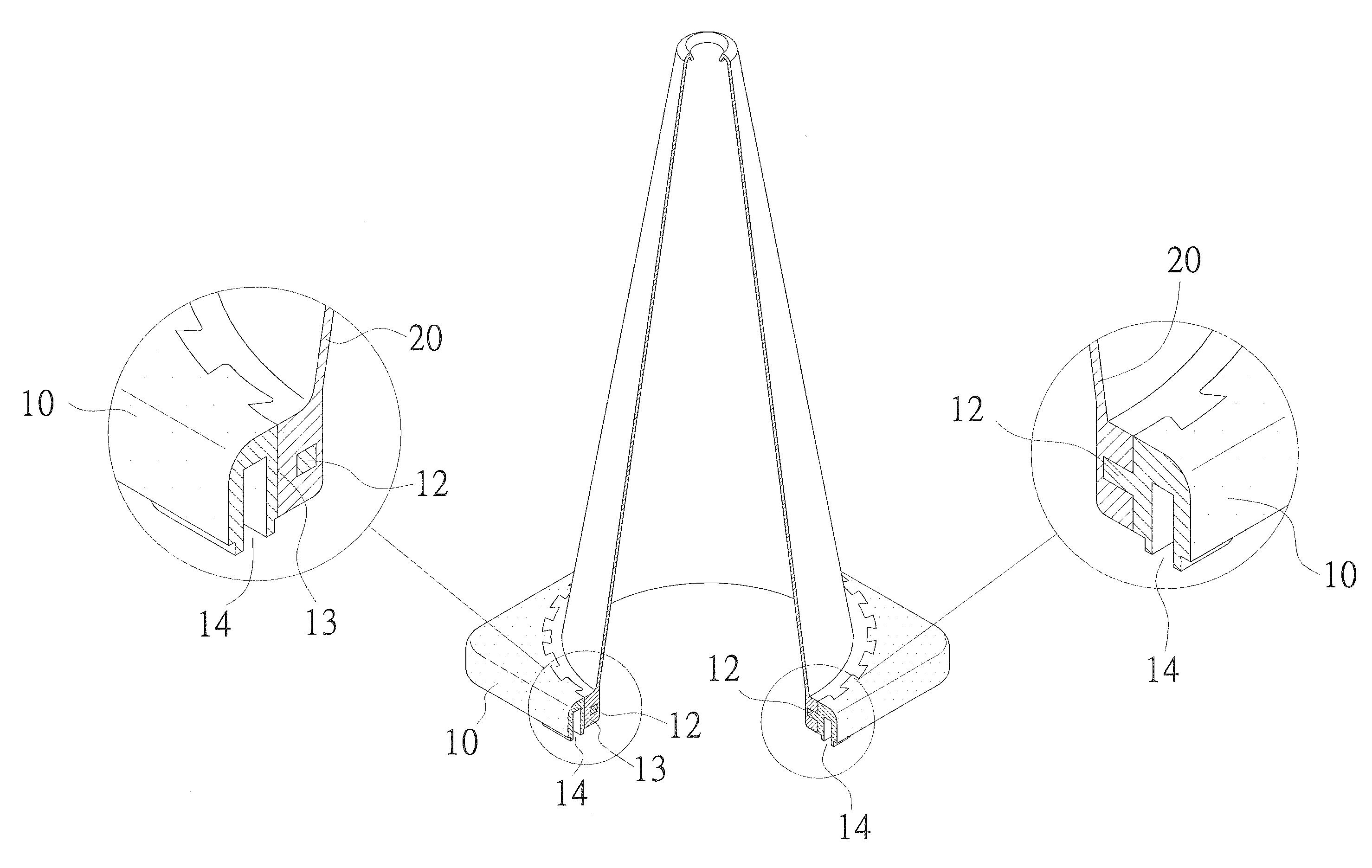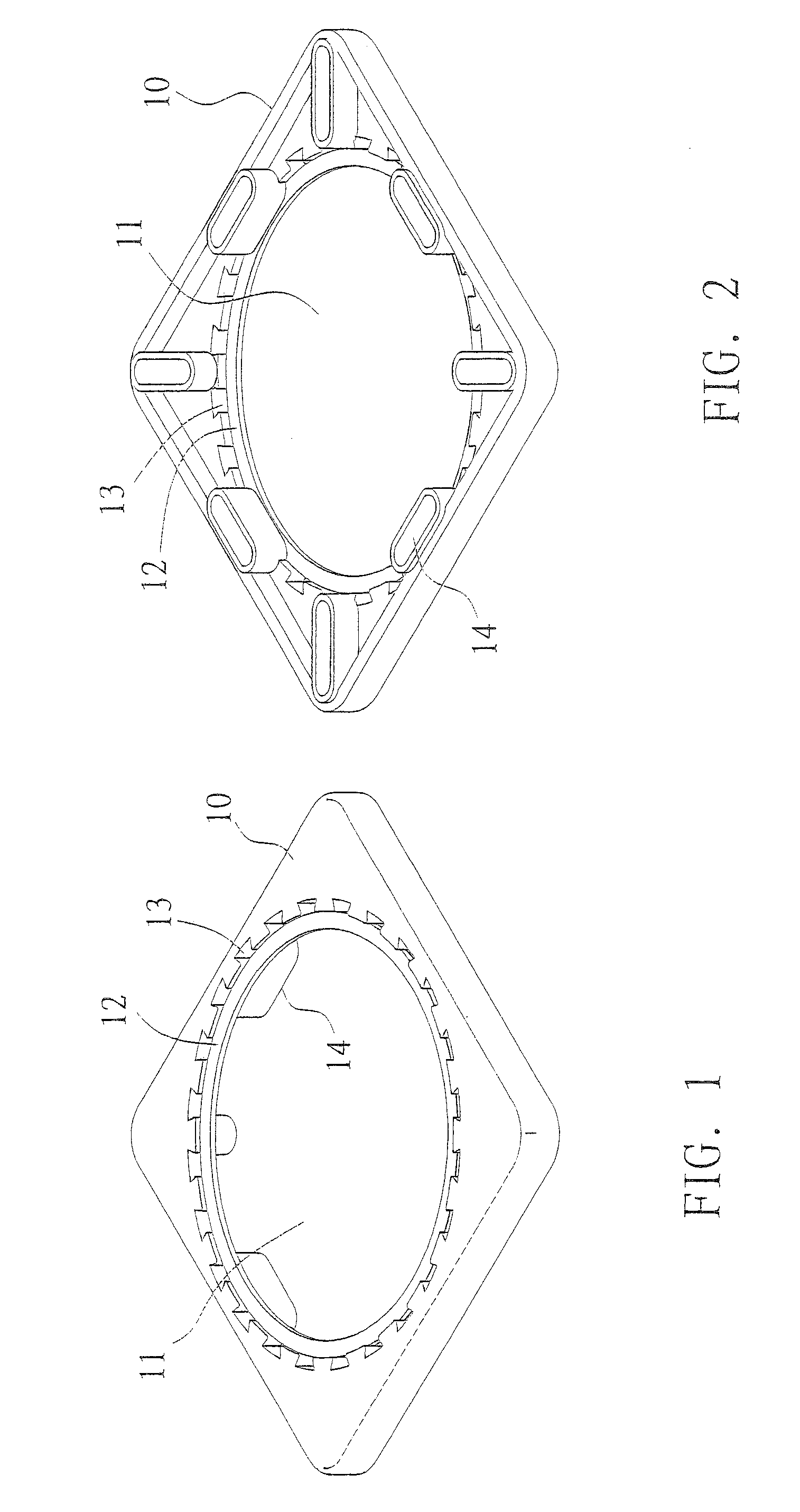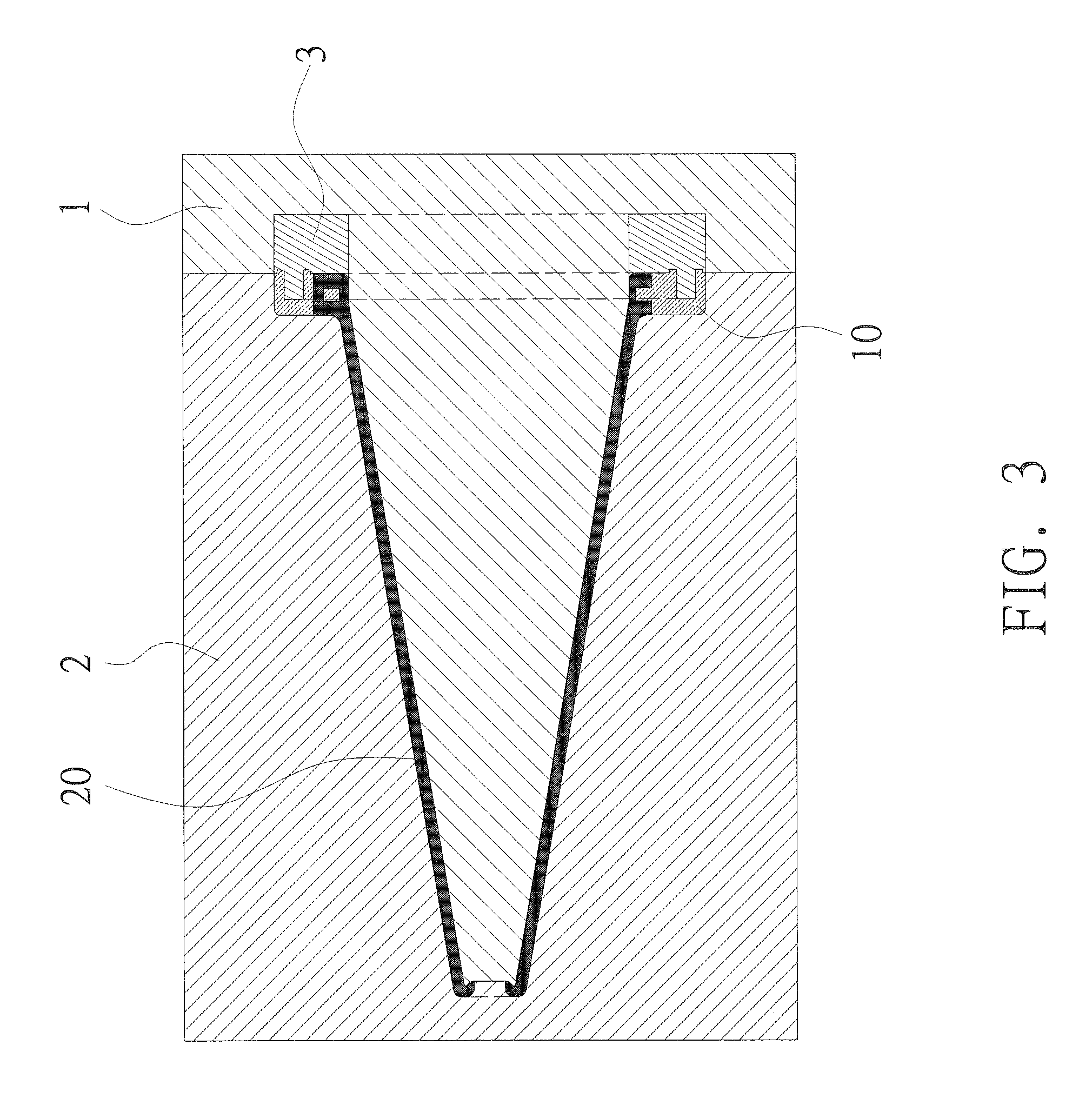Traffic cone counterweight structure
a technology of counterweight structure and traffic cone, which is applied in the direction of roads, roads, construction, etc., can solve the problems of high production cost of traffic cone, material waste, and considerable technical challenges, and achieve the effects of improving the existing traffic cone structure, saving material cost, and enhancing the utilization value and economic benefi
- Summary
- Abstract
- Description
- Claims
- Application Information
AI Technical Summary
Benefits of technology
Problems solved by technology
Method used
Image
Examples
Embodiment Construction
[0018]The structural composition, technical means and effects of the invention are described in detail below with embodiments in reference to the accompanying drawings.
[0019]Referring to the structural diagrams in FIGS. 1, 2 and 5, the assembly structural relations diagrams in FIGS. 3 and 4, and the structural relations diagram in FIG. 6, the structural design for a preferred embodiment of the invention calls for fabricating the base 10 and the cone body 20 of a traffic cone in separate processes, wherein the base 10 is preformed, and then placed in a traffic cone mold for the injection molding of cone body 20.
[0020]Based on actual needs, separately fabricated base molds can be used to make bases with various counterweight configurations. There is provided a large-diameter opening 11 at the center of the base 10 for coupling the cone body 20 in an injection molding process. The mid-section along the inner edge of the opening 11 is extendedly disposed with a convex ring member 12 of ...
PUM
 Login to View More
Login to View More Abstract
Description
Claims
Application Information
 Login to View More
Login to View More - R&D
- Intellectual Property
- Life Sciences
- Materials
- Tech Scout
- Unparalleled Data Quality
- Higher Quality Content
- 60% Fewer Hallucinations
Browse by: Latest US Patents, China's latest patents, Technical Efficacy Thesaurus, Application Domain, Technology Topic, Popular Technical Reports.
© 2025 PatSnap. All rights reserved.Legal|Privacy policy|Modern Slavery Act Transparency Statement|Sitemap|About US| Contact US: help@patsnap.com



